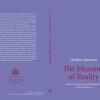Pulitzer Prize Photojournalist Kim Komenich to release new book just in time for 30th anniversary of EDSA Revolution... With your help!
About this project
The 30th anniversary of the 1986 Philippine “People Power” Revolution will be celebrated from February 22-25, 2016. That week, Filipinos from around the world will be honoring the millions who took to the streets during those four miraculous days, putting their lives on the line to protect their democracy.
In honor of the anniversary I am in the process of publishing a collector-quality book of my photos of the fall of the Ferdinand Marcos regime, including the images that were awarded the 1987 Pulitzer Prize for Spot News Photography.
The Story
The photos in the book detail the period in Philippine history from the first anniversary of the assassination of opposition leader Benigno S. Aquino Jr., through the rise of his widow Corazon C. Aquino as the candidate against the ailing dictator in a snap presidential election. Marcos stole the election and as military leaders and their troops turned against the regime, millions of Aquino supporters flooded the streets of Manila and other Philippine cities to form a human shield that would repeatedly repel Marcos tanks and soldiers.
The People Power (or EDSA) Revolution was the first to be witnessed live on international television, thanks to advancements in satellite technology. The whole world was watching. The revolution gave hope to oppressed people around the world and soon, similar non-violent mass actions were toppling authoritarian regimes in Poland and the Eastern Bloc. The People Power model helped tear down the Berlin Wall and dissolve the Soviet Union.
The Book
Revolution Revisited’s introduction was written by Sheila Coronel, academic dean of the Columbia Journalism School and co-founder of the Philippine Center for Investigative Journalism. Her powerful essay begins with a personal account of growing up under martial law and goes on to detail the human toll of the corruption and greed of the Marcos regime’s 21-year reign.
I took the photos from 1984-86 while I was on assignment for the San Francisco Examiner with investigative reporter Phil Bronstein. There were no digital cameras back then, and in all, I shot about 1,100 rolls of Tri-X film. I developed my negatives in makeshift darkrooms hotel bathrooms and made prints that were sent to the U.S. using a telephone wirephoto transmitter.
Our stories explored the depths of the regime’s oppression of ordinary Filipinos, the rise of the opposition, the 1986 campaign and election, and the four-day revolution that sent Marcos and his wife Imelda into exile. The first four chapters of the book showcase photos from that era. So what’s the “Revisited” part, you ask?
Revolution Revisited
From 2010-2015 I traveled to the Philippines eight times in an effort to locate, interview, film and rephotograph some of the people I had photographed in the 1980’s— rich and poor— in an effort to see whether the revolution had made a difference in their lives. The final chapter of the book contains “then-and-now” photos of Philippine Presidents Fidel Ramos and Benigno S. Aquino, III, Imelda Marcos and other notables. It also revisits Sister Delia Regidor, M.I.C., who is pictured facing down Marcos marines at “Camp Ortigas”, and Rodolfo and Concepcion Abong, whose young son Joel died of malnutrition at a Bacolod City hospital, a symbol of the cronyism and corruption in the sugar industry under Marcos. Joel is regarded as one of the heroes of the revolution.
You can learn more about the Revolution Revisited book project and the upcoming Revolution Revisited documentary film at: http://revolutionrevisited.com
The Revolution Revisited Blog features book and exhibition news: http://revolutionrevisited.com/blog
When I was beginning my career I heard a famous photographer say, “you only get one first book, so make it special.” That’s probably why it took me 30 years to publish this book, and why I elected to publish it myself. “Revolution Revisited” has been a labor of love and I like to think of it as a tribute to the resilience of the Filipino people.
We are printing only 1,000 hardcover copies of the first edition. I have personally chosen the best paper (170 GSM Storo Enso) and contracted with one of the world’s top photo book printers (Oceanic Graphic International of China) to make sure the duotone black-and-white images are of the highest quality. The book is 120 pages and measures 11.5X12.5 inches.
In order to ensure the book is released in time to honor EDSA 30 I borrowed $33,000 against my retirement to pay for printing of a first edition of 1,000 books. I need to pay it back by March 7. The minute I receive my Kickstarter check I can pay my bills and begin shipping the books and other Kickstarter rewards.
You can support the Revolution Revisited book for as little as $25 and postage and receive a set of three greeting cards with three of my most requested images as a reward.
Source: Kickstarter




